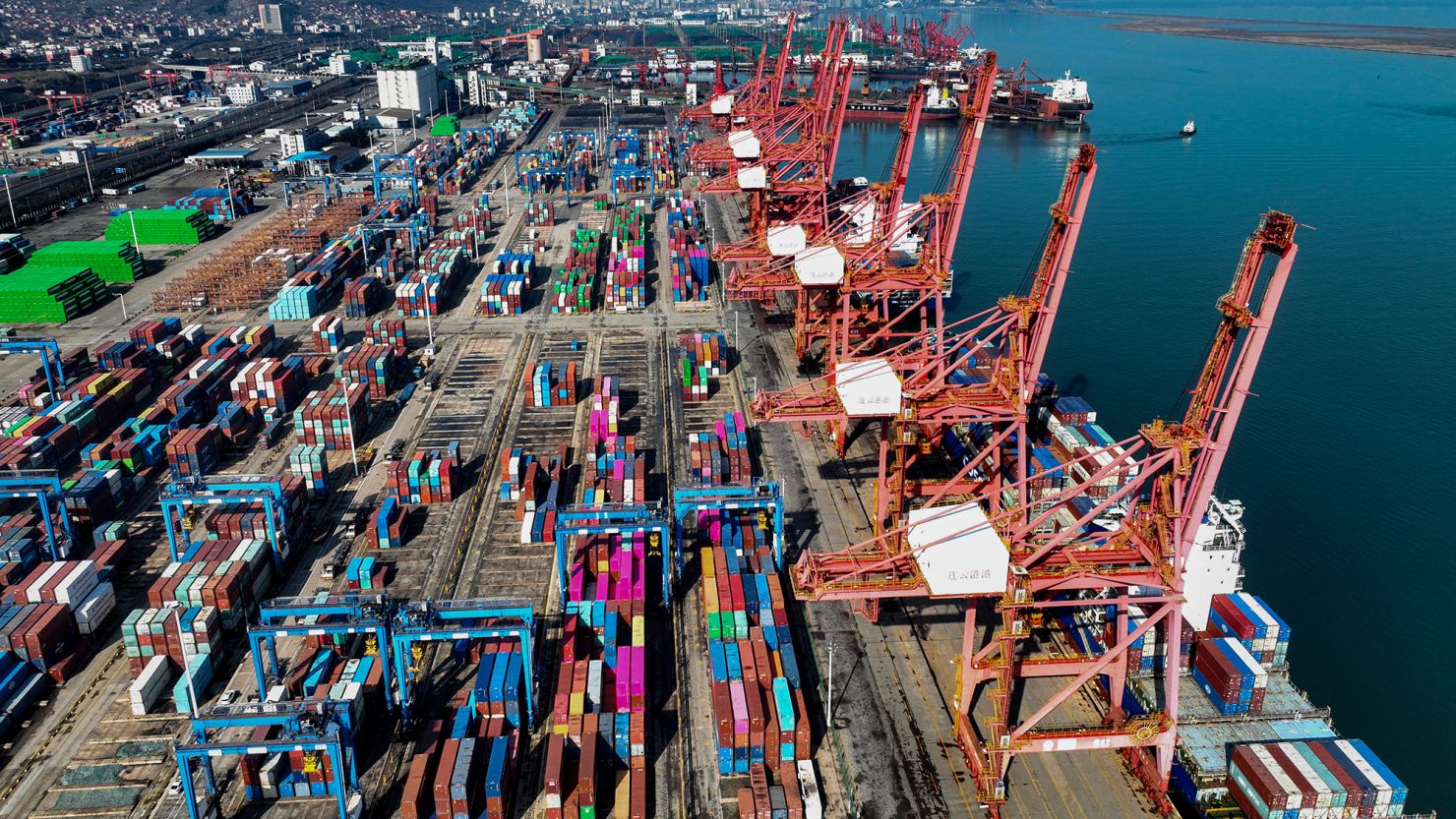Peak freight truck traffic at the Mexico-Texas border was hit at the end of March, as U.S. shippers prepared for increased tariffs to be implemented by the Trump administration
Action at U.S. warehouses for the nation’s largest retailers hit the highest levels ever recorded, according to supply chain research firm Motive.
President Donald Trump on Wednesday announced far-reaching new tariffs on nearly all U.S. trading partners — a 34% tax on imports from China and 20% on the European Union, among others — that threaten to dismantle much of the architecture of the global economy and trigger broader trade wars.
A surge in freight trucking activity
A surge in freight trucking activity, from the Texas-Mexico border to the warehouses and distribution centers of major U.S. retailers, shows the extent to which U.S. companies have rushed to move more imports into the country ahead of President Donald Trump’s reciprocal tariffs, which Trump laid out on Wednesday afternoon from the Rose Garden, trade taxes that will hit international partners “immediately,” according to the White House.according to CNBC
Related : Xeneta : Trump tariffs – top tips on freight tender strategies
The U.S. economy
But all of that frontloading of imports into the U.S. economy also corresponds to a more concerning trend in the trade data that is now taking shape: a steep decline in new freight order activity in every region across the U.S., and a steep quarterly decline in Chinese freight volumes, as uncertainty about consumer demand spreads. The tariff rates disclosed on Wednesday were much higher than expected for many nations, with an additional reciprocal tariff rate for China at 34% sending the markets lower.

According to firm Motive
Data shared with CNBC by supply chain research firm Motive shows a significant surge in trucking activity at the Port of Laredo, the busiest land port in the U.S., with a 48.5% year-over-year increase that hit peak levels as of March 31.
Similar surges in freight volumes
Similar surges in freight volumes and spot rates were seen in February and March on cross-border lanes from Canada to the U.S., according to Paul Brashier, vice president of global supply chain at ITS Logistics.

Related :(Confitarma) responds to Trump on US Tariffs on Chinese ships
Toronto market to the Chicago market
Volumes from the Toronto market to the Chicago market were up over 50%, and rates are up around 10%, with critical expedited shipments 50% higher in some cases. Brashier added that there have been many cases of truck drivers paid to run empty from the U.S. to get back in position to meet surging demand out of Canada into the U.S.
European pharmaceutical companies have been moving more key high-priced drugs into North America through air freight. Though with an average trade cycle of five to six days versus weeks to months for ocean freight, that activity is more muted.
Cross-border warehouse moves
While the North American cross-border warehouse moves have been elevated, future freight scheduled for truck delivery or pickup shows a nationwide hesitation among U.S. importers, according to DataDocks, a global supply chain scheduling system.
In contrast to January and February when there was a high level of scheduled bookings because of the pulling forward of freight ahead of tariffs, volume bookings for the near-term future have plummeted, according to Nick Rakovsky, CEO of DataDocks.
A steep drop in China trade
The pullback in freight orders was first reflected in the ocean carrier volumes out of China, according to data from international shipping association BIMCO, which says there was a 28% fall in the China Containerized Freight Index (CCFI) from the beginning of the year to the end of the first quarter.
Related :Trump’sTariffs: The Trade War and the Impact on Made in Italy
The general export freight rate level
The benchmark reflects the general export freight rate level from ten major ports, and since 2006, it has on average only fallen 2% during the first quarter, according to BIMCO. It has only declined more than 10% four times, said Niels Rasmussen, chief shipping analyst at BIMCO. It was the worst first quarter in 20 years, according to BIMCO.
ASX, Asian

On the other hand Analysts are warning of the growing risk of a global recession as Donald Trump’s tariff announcement is seen as “at the destructive end” of the possible scenarios.
The Australian share market suffered sharp falls today. The benchmark ASX 200 index closed down 74 points, or 0.9 per cent, at 7,859, but was down almost twice that much early in the session.Losses would have been far steeper, though, if not for buying in one of the largest stocks on the market, the Commonwealth Bank, which rose 1 per cent.




